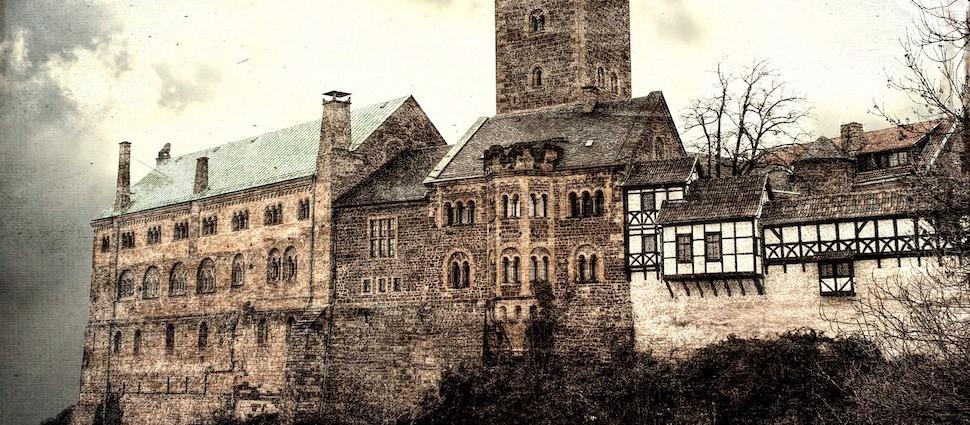Christianity at the Crossroads: The Second Century

As the West experiences a proliferation of worldviews and cultural influences, there is growing consternation about the health and longevity of the Church. While this may seem like a cause for dismay, the history of the Church – especially in the pivotal Second Century – gives us encouragement going forward.
Since Charlemagne, Christianity (generally speaking) had been the preeminent intellectual and cultural force in Europe and North America (doubters are encouraged to examine early and medieval Christianity’s singular influence on western hospitals and health care). Yet from the outset, Christianity had to contend with other theistic systems (Judaism and Islam), as well as atheistic worldviews (Scientific Naturalism), and eventually hybrid systems (modern religious Liberalism).
With the coming of globalism, population shifts, and the emphasis on diversity, we see a myriad of eastern religions and revived pagan systems (just check the crowds at Stonehenge on the Summer Solstice!) joined by the most recent heavyweight contender, Post-Modernism, swarming into the western intellectual arena, all vying for supremacy.
As a consequence of fighting back against the increasing number of worldviews, many writers assert that Christianity has been stripped of its title as the West’s heavyweight cultural influence. This worldview smorgasbord has led others to hail the arrival of the “Post-Christian West,” with Christian writers lamenting this transition as a harbinger of doom for both the West and the Church.
Given all of this, how worried should Christians be about the Church in a Post-Christian environment that is dissolutely spending down its Reformation cultural capital and shoving Christianity over the cultural cliff? Certainly western Christians should be concerned, but we need not be despondent. True, transition periods are worrisome because of the outcome’s uncertainty. But Christians can have hope, because the Church’s situation in today’s pluralistic milieu is in many ways similar to the Early Church’s cultural context, and the historical record of Christianity in the Second Century shows that it did survive such cultural diversity and hostility.
From the outset, the prognosis of Christianity’s long-term viability was tenuous at best (humanly speaking). After the First Century, the pressing concern was what will become of the nascent Church now that all the Apostles had died? As Michael Kruger writes (p. 1) in his helpful book, Christianity at the Crossroads, Christianity “possessed very little cultural influence, was weak and frail, and found itself fighting for its life. Theological formulations were imprecise and undeveloped, factions and ‘heresies’ were dominant, attacks from pagan philosophers were rampant, and the future was altogether uncertain.”
In this key century, Christianity was forced to reckon with the cultural diversity of the Roman Empire. Rome had unified the Mediterranean basin using its legions, laws, and language, but it exhibited great diversity within unity. Culturally, it was not monolithic, but a welter of worldviews, some compatible, others antithetical; sometimes accommodating each other, while other times ferociously fighting like junkyard dogs. Roman social diversity manifested itself in class differences, as between slaves and patricians, while religious pluralism was not only encouraged but demanded. For example, as long as adherents to a mystery religion also willingly participated in the state religion’s emperor worship, everyone was happy.
Providentially Christianity survived in this diverse pagan culture. Not only did it survive, it also spread. It was in the Second Century that Christianity expanded geographically, transitioning from a small, ethnically homogenous sect of Judaism to a religious force that continued to expand from various pockets scattered across the empire. Despite these challenges, Christianity also managed to expand up the rungs of the social ladder, finding adherents not just among the poor, but even among ranking members of Caesar’s household (Kruger, 26).
Christianity was able to successfully navigate this transition because it wisely responded to the diversity its milieu imposed on it. It was in this transitional century that Christian apologists took pen in hand to defend it biblically and philosophically against pagan philosophers and hostile state actors. And it was in this fateful century that a number of prominent Christians (among them Ignatius and Polycarp) courageously sealed their testimony with their blood, eventually becoming the seed of the church.
As the cultural diversity of the twenty-first century West comes more and more to resemble that of the second-century Roman Empire, it remains for Christians in the West not to despair about the culture that is changing before our eyes, but to learn from our second-century ancestors to wisely engage our own culture. It falls to us to resolve to cogently defend Truth, robustly demonstrate the veracity and relevance of the Bible, and winsomely present the clear and convincing proofs of Christ’s resurrection to a world that is rushing headlong into what Chuck Colson described almost thirty years ago as the New Dark Ages.
James Rich is the Assistant Pastor at Covenant Presbyterian Church (PCA) in Harleysville, PA, and holds a Ph.D. in Church History from Westminster Theological Seminary in Philadelphia. He taught high school history and Bible and has served as an adjunct faculty member at the college and seminary level.





